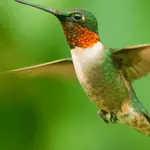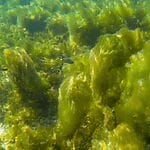Going for a relaxing walk on the beach is one of the best things you can do for the mind. Beaches are filled with calming sounds, wonderful sea-water smells, and soft-golden sand that feels soft on your feet.
Strolling on an empty beach may make you feel like you’re the only person in the world, but what if we told you that you weren’t alone?
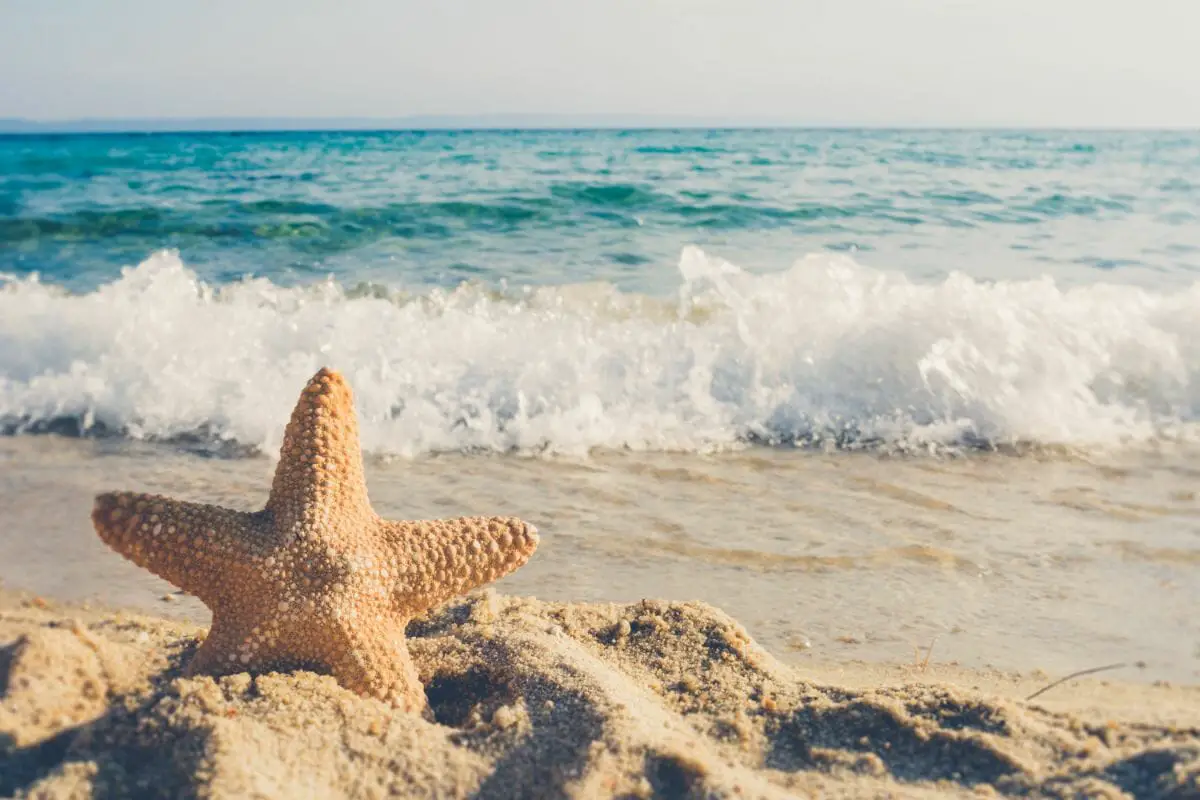
There are several little animals that live on the beach, with the sand being known as their home.
These tiny creatures burrow in the sand and feed on certain organisms that are only found in the sand and around beaches.
This article is going to explore some of the wonderful little creatures that lurk in the sand.
Sand Crabs
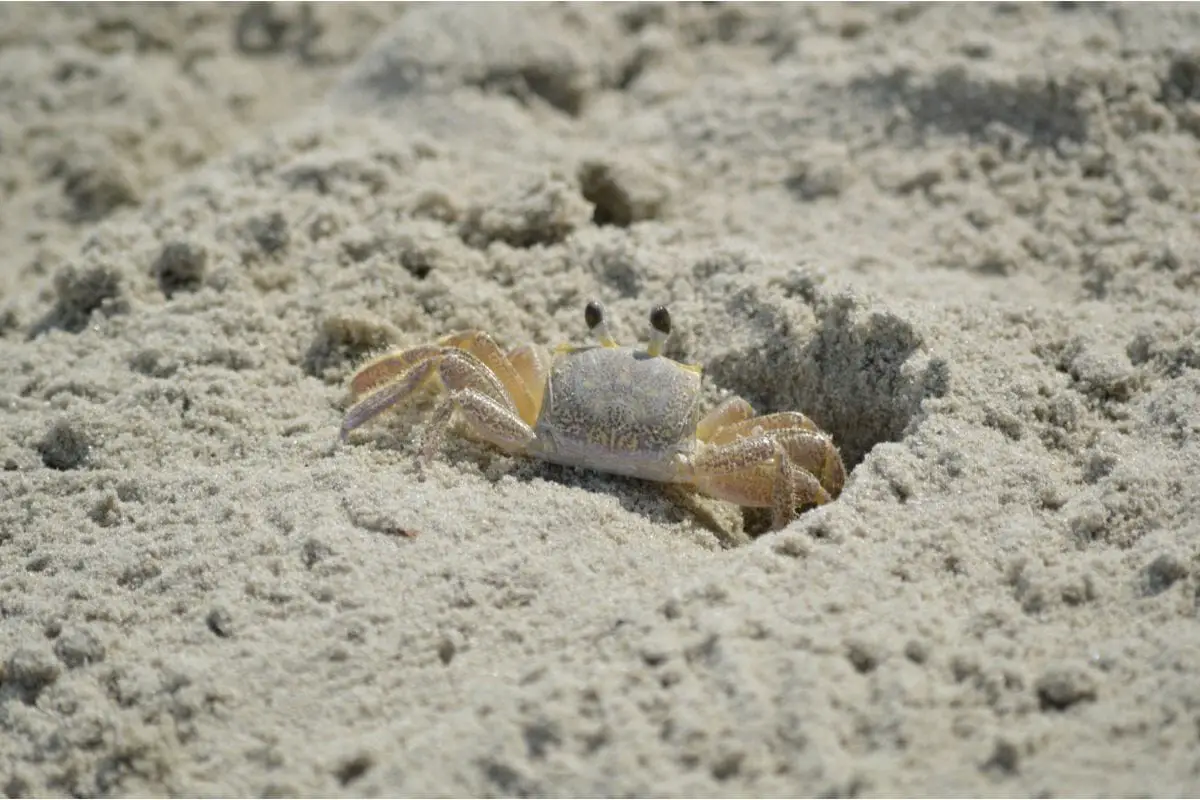
Sand crabs are little crustaceans that you’ll find living in the sand. They are also known as mole crabs, and they resemble the appearance of small eggs.
They’ll often grow to around 1.5 inches in length and are easily distinguishable if you’re sitting on the sand. You may notice their little heads poking out of the sand, while their bodies remain buried.
These little animals are barrel-shaped with a sharp tail, pointy legs, and antennae, and due to their gray color, they can camouflage easily in the sand.
They differ from regular crabs as they don’t have claws, and males are normally an inch in length, with females being able to grow to two inches.
They like to bury themselves in the wave wash, so they spend their lives following the tide to make sure of this! Interestingly, they cannot move sideways or forwards, they are only able to move backward.
While you’ll often notice vast numbers of these little crustaceans together, they enjoy being solitary, and will only mingle during the reproductive season.
They can be found in dunes and beaches all over the globe, especially in Australia, the Atlantic coast of Africa, the United States, and the Indo-Pacific region.
Rove Beetles

Rove beetles are some of the most common beetles you will find living in the sand.
They love beaches as they need a moist environment to survive, and they feed on several organisms that are found on the sand and by the water.
While the idea of beetles living in the sand that you’re lying down on, may make you feel uncomfortable, you have nothing to fear as these little guys are completely harmless to humans.
Beach Wolf Spiders
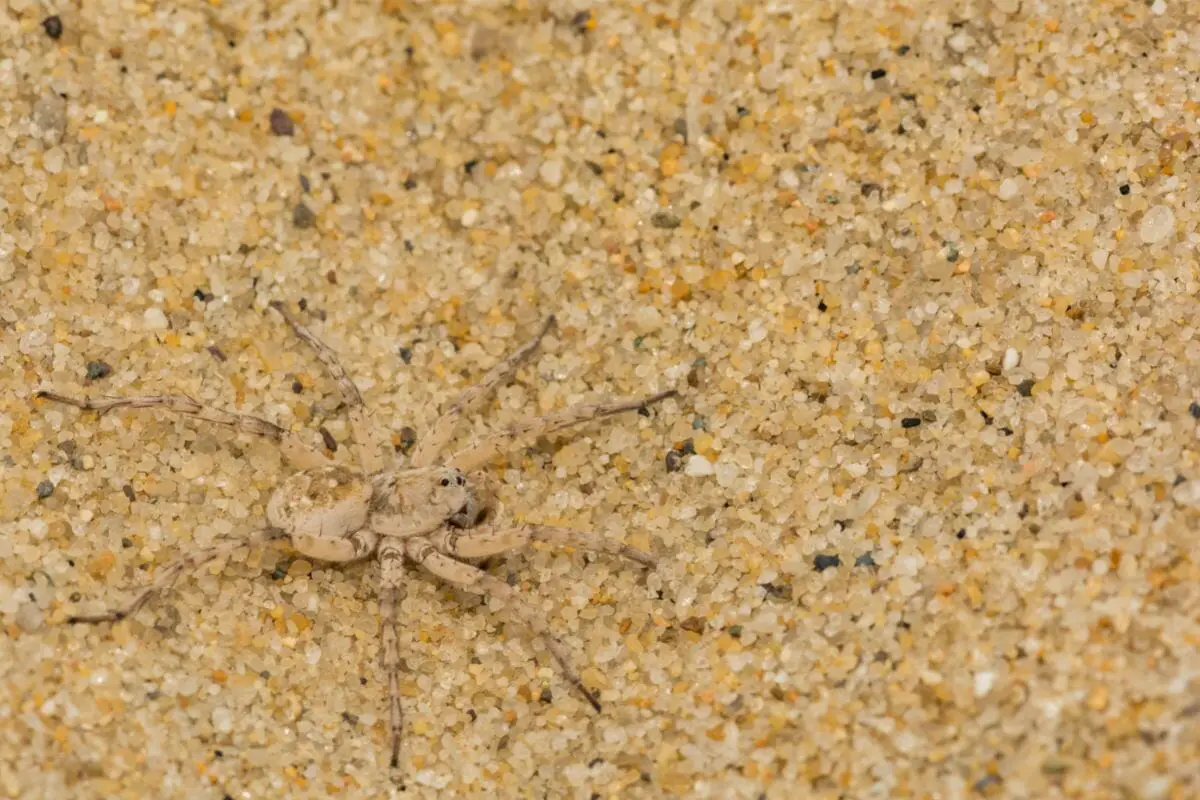
Wolf spiders have adapted to be able to live almost anywhere, but they are commonly found on beaches.
They can camouflage themselves very easily, and they’ll usually hide under the sand or under any driftwood during the daytime.
While they only grow to around 15 millimeters, they move exceptionally fast, and you may see a couple scattering over the sand as you sunbathe.
It is important to note that their bite is poisonous, and can be painful, but it is not lethal to humans. They don’t tend to be aggressive, and will only bite if provoked.
Blood Worms
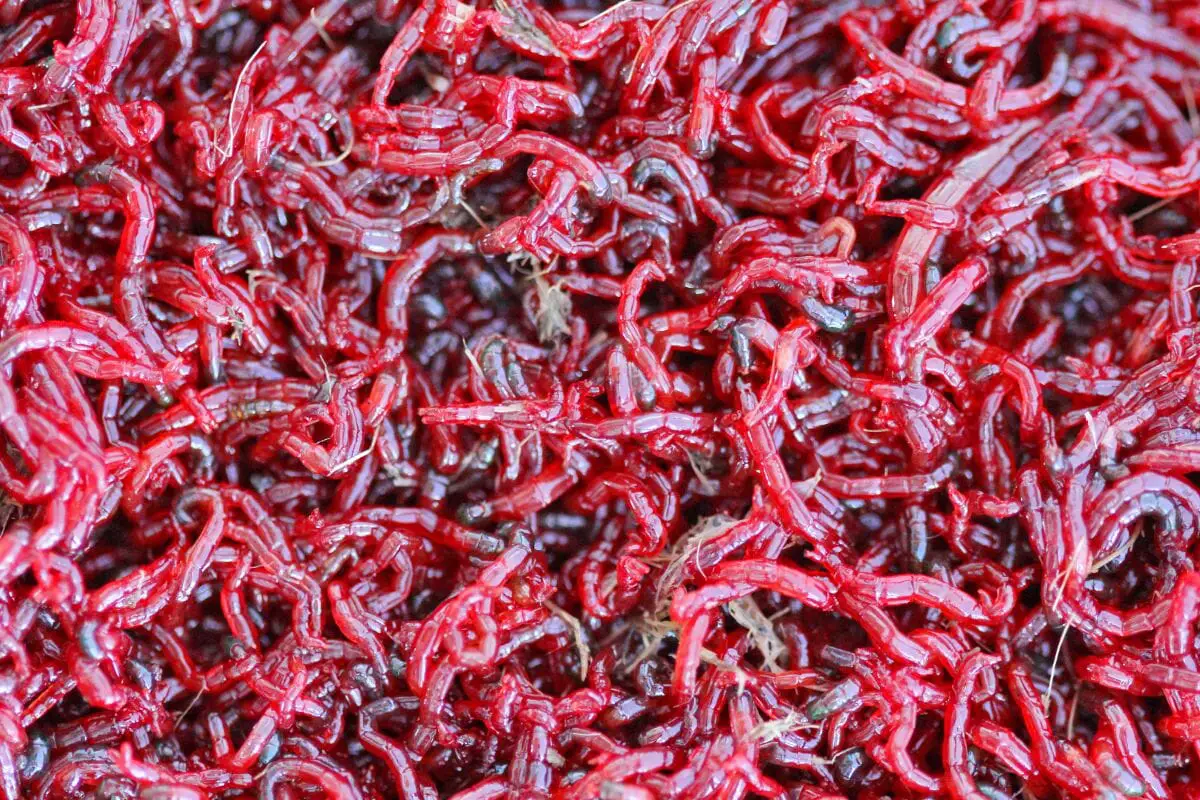
Blood worms are normally found in moist sand that is closer to the water. This kind of sand makes it easier for them to burrow into, as opposed to sand that is dry.
They earned their name from their bright red color, and this makes them very noticeable. This color is the result of a protein in their blood and tissue called iron-porphyrin.
Blood worms are one of the main food sources in the aquatic food chain. All meat-eating fish will eat blood worms, and others that consume them are turtles, frogs, and snails.
Sand Fleas
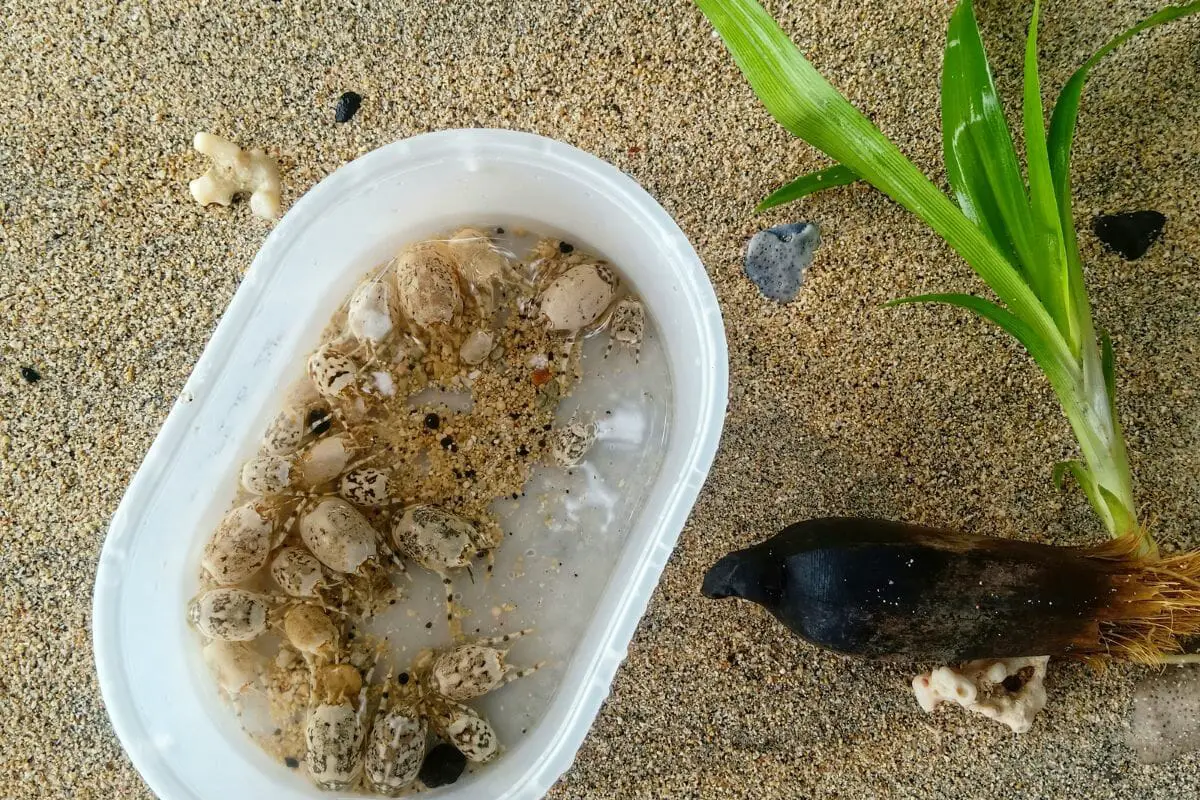
Also known as sand hoppers, beach fleas, and beach hoppers, sand fleas are not actually fleas. They are little crustaceans, the same family that crabs belong to.
However, they jump around just like fleas do, which is how they earned their name. Despite this, they do not bite people.
They are tiny in size, usually ranging from a quarter of an inch to an inch in length. They are normally gray, brown, or green in color, and they have numerous pairs of legs, along with long antennae.
You’ll normally find them living on sandy beaches where the tide is high, and they are more active during the night when they scrounge for food. Throughout the day, they prefer to be buried in the sand.
They are found along the Atlantic coast, and some species are found along the Gulf coast.
Unlike regular fleas that cause issues when found in your home, sand fleas are not likely to cling to your clothes and travel home with you.
These creatures like to spend their time in the sand, and they are only active at night, which is not the likely time for beach goes to frequent the beach.
Razor Shells
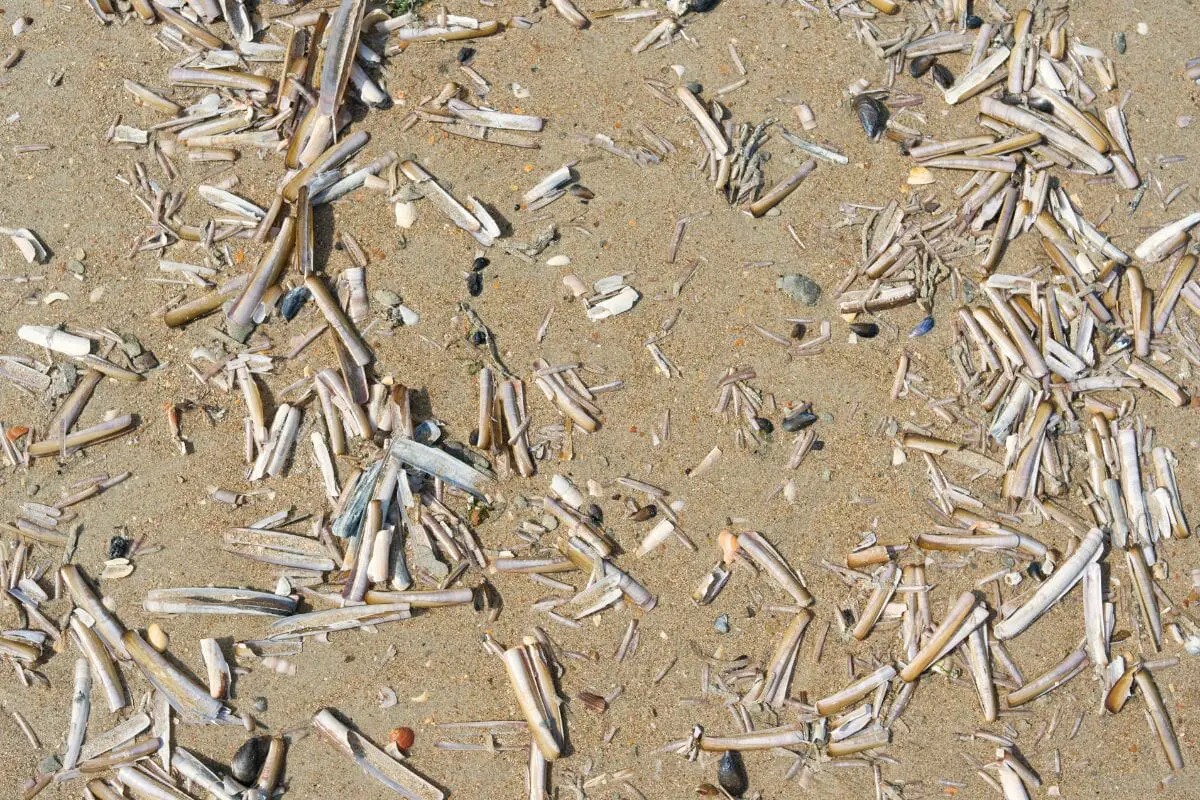
Razor shells, also known as razor clams, are clams with long, narrow shells. They live in the sand where there is low tide, but you’ll also find them burrowed in the sand in waters that are up to 60 meters in depth.
These clams are very common on British beaches, but they can also be found on the North American Atlantic coast. However, in America, they are known as the Atlantic jackknife clams.
They are a very popular cuisine in seafood, and their meat is chewy and sweet, with a sand-like texture.
Their taste is very distinctive, and many who don’t enjoy seafood do not like the taste of this clam as it is so fishy. However, regular fans of seafood love these clams, as they are truly delicious!
Final Thoughts
To conclude, there are a variety of different little creatures that live among the sands of your favorite beaches.
While some, such as the spiders mentioned in this article, may not necessarily have you screaming with joy, they are harmless to humans and will not cause you any trouble.
These little creatures should also not be caught and taken home, they should be observed in their natural habitat, and their space should be respected.






